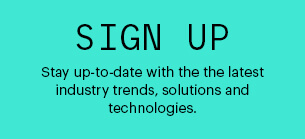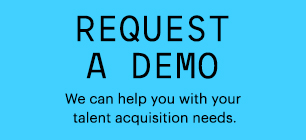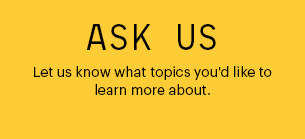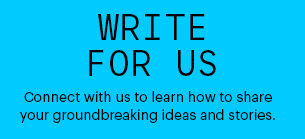The recent adoption of AI by some employers has drastically transformed the way their organizations hire. Through the use of predictive AI tools, employers can hire more strategically and proactively, connecting with top talent more efficiently without guesswork. Talent teams that are slower to adopt AI risk shortages and gaps created by reactive hiring. Longer term, these challenges can stall innovation, reduce revenue and compromise competitive advantage.
Shifting from reactive to proactive hiring gives organizations a strategic advantage. By using predictive AI technology, hiring teams can maintain an edge when attracting and hiring qualified talent. And with the right platform, hiring teams can leverage Agentic AI to move toward proactive workforce planning – and leave reactive hiring behind.
Traditional Workforce Planning Challenges
Traditional workforce planning relies on historical data, manual spreadsheets and headcount forecasts. These methods often fail to account for rapid shifts in market demand and emerging skill requirements, causing potential skill gaps to go unnoticed.
A recent study from McKinsey revealed a critical disconnect. While 92% of companies plan to increase their AI investments over the next three years, only 1% of leaders say their organizations are mature in AI deployment. Additionally, just 3% of talent teams report advanced AI adoption, according to Forrester.
This gap underscores a broader challenge. AI adoption has become popular with organizations, but many employers still lack the strategic alignment and agility to use it effectively in workforce planning – and talent acquisition is being left behind in the conversation. Without predictive tools and real-time insights, recruiters are reacting to vacancies instead of anticipating them. To ensure strategic workforce planning, the adoption of AI tools should be prioritized – to avoid putting hiring teams further behind.
How AI Predicts Talent Needs
AI-powered talent acquisition platforms use predictive analytics to forecast hiring gaps before they become business risks. These systems analyze vast datasets to identify patterns that humans might miss.
Internally, AI can assess:
- Attrition risk based on tenure, performance and engagement signals.
- Skills inventories to determine which capabilities are underrepresented or overutilized.
- Workforce trends tied to business growth, restructuring or seasonal demand.
Externally, platforms can tap into:
- Large industry datasets to model future hiring needs.
- Real-time insights in talent availability, compensation trends and competitive hiring activity.
- Scenario modeling to simulate workforce needs based on strategic initiatives, allowing hiring teams to proactively build pipelines and allocate resources before demand spikes.
According to HR.com, 51% of organizations still depend on reactive hiring, missing the chance to plan ahead and engage with top talent. Additionally, only 5% of HR professionals surveyed stated that their talent acquisition was mature in deployment. This highlights an opportunity for predictive AI to streamline manual hiring processes and enable recruiters to focus on strategy.
AI-Powered Hiring Platforms in Action
Today, AI-powered talent acquisition platforms are designed to do more than just automate hiring tasks. They serve as strategic tools that help employers anticipate, plan and execute hiring with precision.
These platforms combine predictive analytics, labor market intelligence and automation to support proactive decision making. They deliver that impact with:
- Real-time insights: Talent teams gain access to up-to-date data on talent availability, skill gaps and competitive hiring trends. This helps recruiters more effectively position roles.
- Automated candidate matching: AI models analyze resumes, job descriptions and historical hiring data to surface candidates who align with role requirements and long-term organizational needs. This reduces manual screening and improves hiring quality.
- Internal mobility mapping: Intelligent platforms identify employees with transferable skills who can be redeployed into open roles, reducing hiring costs and boosting retention.
- Scenario modeling and forecasting: Talent teams can simulate hiring needs based on business initiatives. These simulations help teams proactively build talent pipelines and allocate resources appropriately.
By integrating these capabilities, AI-powered hiring platforms enable recruiters to become more strategic, aligning their talent acquisition strategy with broader business goals.
Closing Skill Gaps Before They Open
One of the most powerful applications of AI in talent acquisition is the ability to identify and address skill gaps before they impact business performance. Rather than waiting for roles to sit unfilled, intelligent talent acquisition platforms help organizations take a proactive approach to workforce development.
These systems analyze large internal and external datasets to help talent leaders forecast their upcoming hiring needs. This enables hiring teams to more easily:
- Determine emerging skill needs based on internal data.
- Identify internal candidates with adjacent or transferable skills who can be upskilled or redeployed into another role.
- Recommend targeted learning and development programs to close hiring gaps before they widen.
This approach supports both short-term hiring goals and long-term workforce resilience. By aligning talent development with predictive insights, organizations can reduce reliance on external hiring, improve retention and build a more agile workforce.
Benefits of Proactive Hiring with AI
When hiring teams use platforms powered by Agentic AI, like the Radancy Talent Acquisition Cloud, to anticipate workforce needs, they unlock measurable improvements across the entire recruiting life cycle.
Proactive hiring powered by AI delivers:
- Faster time to fill: Predictive insights allow recruiters to build talent pipelines ahead of demand, reducing delays and minimizing disruption to business operations.
- Improved quality of hire: AI models match candidates based on skills, potential and long-term fit, leading to better performance and retention.
- Cost efficiency: By reducing reliance on external agencies and minimizing turnover, organizations save on hiring and onboarding expenses.
- Enhanced candidate experience: Personalized outreach and streamlined processes create a smoother journey for applicants, strengthening employer brand.
Ultimately, proactive hiring enables recruiting teams to move from simply filling roles to shaping the workforce, ensuring the right talent is in place before the organization needs it.
Stay Ahead with Predictive Talent Acquisition
The future of talent acquisition is proactive, data-driven and powered by Agentic AI. As workforce demands evolve and competition for top talent intensifies, relying on short-term hiring strategies is no longer sustainable. AI-powered talent acquisition platforms give recruiters the foresight to anticipate needs, close skill gaps and align hiring with business strategy before challenges arise.
The Radancy Talent Acquisition Cloud, powered by Agentic AI, can help your team move from reactive recruiting to strategic workforce planning. Built with predictive insight and intelligent automation, it simplifies hiring and enables you to connect with top talent, faster. See how our AI platform can help you stay ahead of hiring gaps, accelerate results and build the workforce of tomorrow – book a demo.
- HR ROI Decoded: How to Measure the Real Impact of Your Recruitment Strategy - December 11, 2025
- Fosway Viewpoint Paper Recap: How Agentic AI Is Reshaping Talent Acquisition - November 11, 2025
- How AI Talent Acquisition Platforms Are Transforming Candidate Tracking - October 23, 2025
- The Josh Bersin Company Report Recap: The Talent Acquisition Revolution - October 21, 2025
- Optimizing Hiring: The Power of AI Recruiting Tools and Human Insight - October 9, 2025
- Talent Acquisition vs. Recruitment: What’s the Real Difference? - September 15, 2025
- Beyond AI Hype: Building Talent Intelligence Architecture - September 11, 2025
- AI Talent Prediction: How You Can Stay Ahead of Hiring Gaps - August 28, 2025
- What is an Employee Value Proposition? A Talent Strategy Essential - July 24, 2025
- How to Master Human Resource Forecasting in Uncertain Times - July 10, 2025











